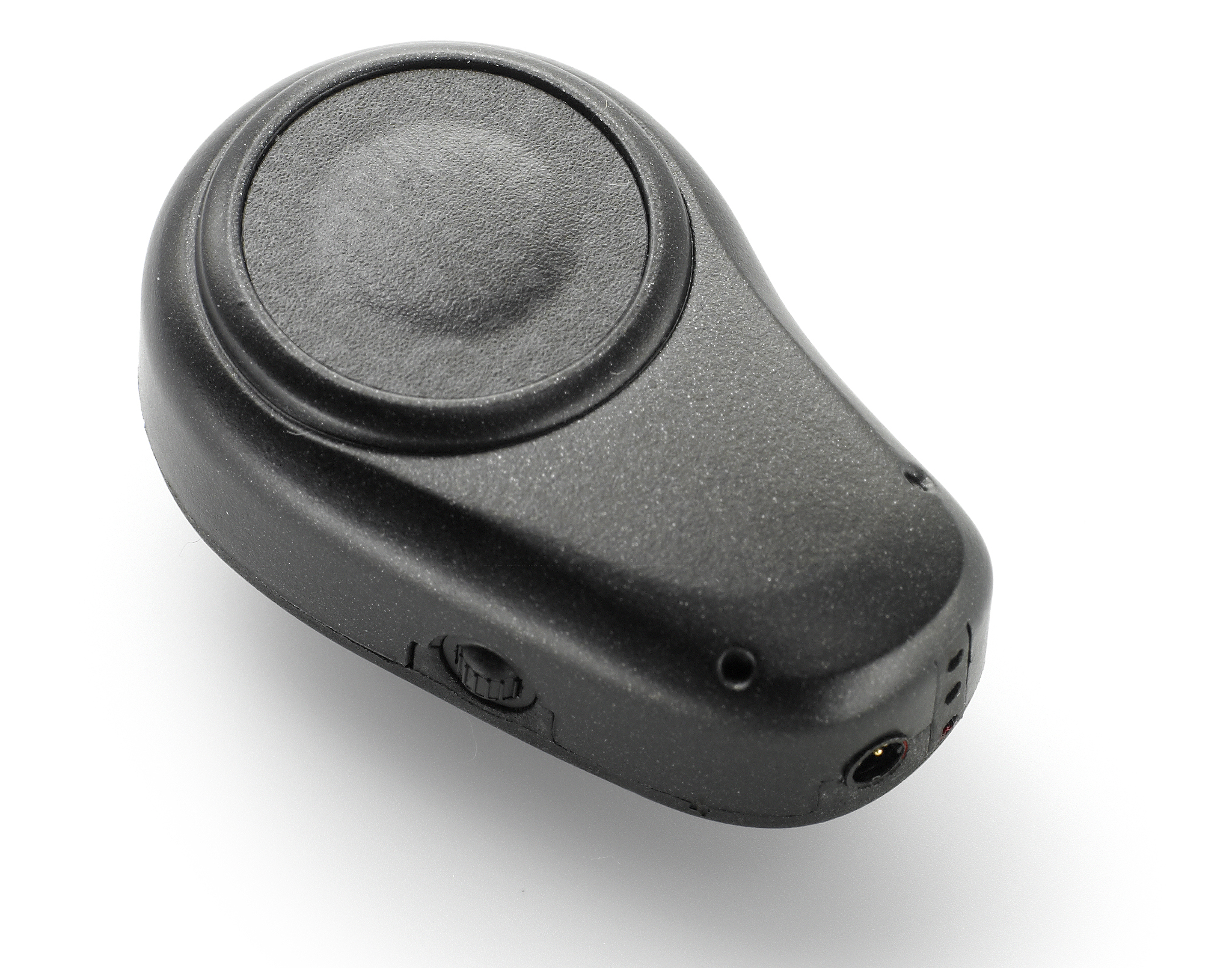BONE CONDUCTION DEVICES
What is bone-conduction hearing?
Oticon Ponto external processor
Conventional hearing aids rely on air conduction to perceive sound; an amplified sound gets sent down the ear canal, strikes the ear drum causing the middle ear bones to vibrate. The vibrations are transferred to the cochlea (inner ear) fluids, which are then converted into electrical impulses by tiny hair cells in the cochlea. These electrical impulses are sent to the brain to be perceived as sound.
Another way to perceive sound is through bone conduction. There are two surgical devices on the market that are designed for the individual to hear through bone conduction: The Cochlear Baha and the Oticon Ponto.
Photo from www.cochlearamericas.com
These devices bypass the outer and middle ear and sends vibrations directly to the cochleas. Once in the cochlea, the sound is treated the same as an air-conducted signal. Between cochleas, there is zero interaural attenuation time. In other words, when bone conduction hearing occurs, both cochleas are delivered the sound at the same time. The cochlea with the better hearing perceives the sound. Therefore, if a user has single-sided deafness, the device can be placed above the poor ear to pick up sound from that side. The device will deliver the sound through the skull to the better ear to be perceived as sound.
Components of a bone conduction device
The device consists of three parts:
- A Sound Processor: The sound processor sits behind the ear and picks up sound through a microphone. The sound is amplified and converted into sound vibrations. The sound processor is connected to the head by the abutment.
- An Abutment: The abutment is the "middle man" between the sound processor and the titanium implant. It transfers the sound vibrations from the sound processor to the titanium implant.
- A Titanium Implant: The titanium implant is a small fixture that is surgically placed behind the ear. The implant naturally fuses with the bone (this is called osseointegration) and transfers the sound vibrations from the abutment to the cochleas (or inner ears).
Photo from www.cochlearamericas.com
Who can benefit from a surgical bone conduction device?
The Baha or Ponto is for patients who:
- Hear only from one side (unilateral hearing loss)
- Have single-sided deafness
- Have malformed ears, or chronically draining ears with hearing loss
- Have a conductive hearing loss (CHL definition: A hearing loss that involves the outer or middle ear's inability to "conduct" the sound to a healthy inner ear, or cochlea)
- Have a mixed hearing loss (MHL definition: A hearing loss that involves the outer, middle, and inner ear. In other words, the patient has a degree of inner ear hearing loss that is intensified by an outer and/or middle ear problem)
Pathologies or conditions appropriate for the Baha or Ponto include, but are not limited to:
- Atresia (absence of external ear canal)
- Stenosis (narrowing of the ear canal)
- Chronic suppurative otitis media
- Complications of radical mastoidectomy
- Ossicular malformation (malformation of the middle ear bones)
- Severe tympanosclerosis (calcification of tissue in the ear drum)
- Intolerance or allergy to earmolds used for conventional hearing aid use
- Post-operative mastoid cavity with chronic otorrhea (ear drainage)
How long does it take to get the sound processor?
Oticon Ponto processor with abutment
In adults, the joining of the sound processor to the abutment is typically performed three months after surgery to allow the bone to osseointegrate with the titanium implant. Osseointegration means the bone and prosthetic device will make a functional connection.
Considerations for Surgery
The surgery is a one hour, low-risk, typically out-patient surgery. There is a low rate of complications with a high safety profile. If proper after-care is not followed, there is a risk of local wound infections. The sound processor is susceptible to mechanical failure and repairs, though the device comes with a three year warranty. Additionally, a small percentage of abutments do not osseointegrate. Overall, however, patients experience a high level of satisfaction.
Am I a candidate?
Learn more about the Baha and/or Ponto sound processor options from your audiologist. A hearing evaluation will be performed and candidacy will be reviewed. A demonstration of the device can be done in the office to "test drive" the device before undergoing surgery. This can be done by placing a Baha or Ponto processor on a headband. Please contact us to make an appointment.
For more information, please visit www.cochlearamericas.com or www.oticonmedical.com



